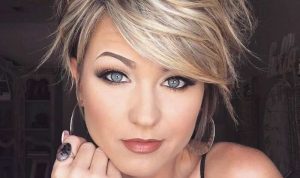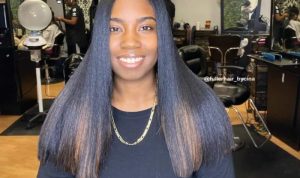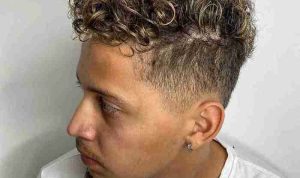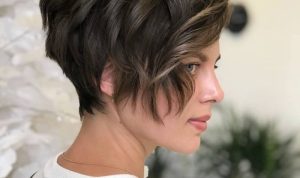Understanding Thinning Hair in Men: Hairstyles For Thinning Hair Men
Hairstyles for thinning hair men – Male pattern baldness, or androgenetic alopecia, is a common condition affecting millions of men worldwide. Understanding the patterns, causes, and early signs is crucial for effective management and choosing suitable hairstyles.
Finding the right hairstyle can be challenging for men experiencing thinning hair. Strategic cuts and styling techniques can create the illusion of thicker hair. However, if you have curly hair and are dealing with thinning, understanding how to manage your curls is key; for inspiration, check out this guide on good hairstyles for men with curly hair which offers insights applicable to thinning hair as well.
Ultimately, the goal is to find a style that complements your hair type and masks any thinning areas effectively.
Male Hair Thinning Patterns
Hair thinning in men typically follows predictable patterns. The most common is a receding hairline, starting at the temples and gradually progressing upwards. Another prevalent pattern involves thinning at the crown, often creating a horseshoe-shaped area of thicker hair around the sides and back of the head. Some men experience a combination of both receding hairline and crown thinning.
Less common patterns might involve diffuse thinning, where hair becomes thinner across the entire scalp.
Causes of Male Hair Thinning
Several factors contribute to hair thinning in men. Genetic predisposition plays a significant role, as does hormonal changes, particularly fluctuations in dihydrotestosterone (DHT). Other contributing factors include stress, poor nutrition, certain medical conditions, and aggressive hair styling techniques.
Genetics and Male Hair Loss
Genetics are a primary determinant of male pattern baldness. If a man’s father or maternal grandfather experienced significant hair loss, his chances of experiencing similar hair thinning are considerably higher. The genetic component involves specific genes that influence the sensitivity of hair follicles to DHT, leading to miniaturization and eventual hair loss.
Recognizing Early Signs of Thinning Hair
Early detection is key to managing hair loss effectively. Early signs often include increased hair shedding, a widening part, a receding hairline, and noticeable thinning at the crown. Changes in hair texture, with hair appearing finer and less dense, are also indicators.
Hairstyles to Conceal Thinning Hair
Choosing the right hairstyle can significantly minimize the appearance of thinning hair. Short, textured styles generally work best, as they create the illusion of greater volume and density. Avoid styles that pull the hair tightly, which can exacerbate thinning.
Hairstyles for Thinning Hair at the Crown
- Short, textured crops
- Buzz cuts
- Side-parted styles with longer hair on top
- Layered cuts
- Faded styles with textured top
- Comb-overs (used cautiously and skillfully)
- Quiff hairstyles (with volume-enhancing products)
- Undercuts
- Slicked-back styles (with careful styling)
- Caesar cut
Hairstyles for Receding Hairlines
| Style | Description | Suitability | Maintenance |
|---|---|---|---|
| Side Part | Hair parted on one side, often with slightly longer hair on top. | Receding hairline, moderate thinning | Low to medium |
| Slick Back | Hair combed back smoothly, often with a high shine product. | Receding hairline, fine hair | Medium |
| Short, textured crop | Short, choppy layers to create volume and texture. | Most receding hairlines | Low |
| Undercut | Short sides and back, with longer hair on top. | Most receding hairlines | Medium |
| Buzz Cut | Very short, even length all over. | Significant receding hairline | Low |
Hairstyles that Add Volume
- Layered cuts
- Textured styles
- Short, choppy styles
- Styles with height on top
- Avoid styles that flatten the hair
Styling Short Hair for Thinning Hair
Short hair is generally easier to style and maintain for men with thinning hair. Using a volumizing mousse or styling cream before blow-drying can add lift and texture. Avoid heavy products that can weigh the hair down. A textured finish, achieved through careful use of styling products and a diffuser attachment on a hairdryer, can create the illusion of thicker hair.
Hair Products for Thinning Hair
A range of hair products can help to enhance the appearance of thinning hair. These products work through different mechanisms, from adding visual volume to stimulating hair growth.
Types of Hair Thickening Products
Hair thickening fibers are tiny, keratin-based fibers that cling to existing hairs, creating a fuller look. Thickening sprays and mousses add volume and hold, while shampoos and conditioners designed for thinning hair often contain ingredients that strengthen and stimulate hair growth.
Benefits and Drawbacks of Hair Styling Products
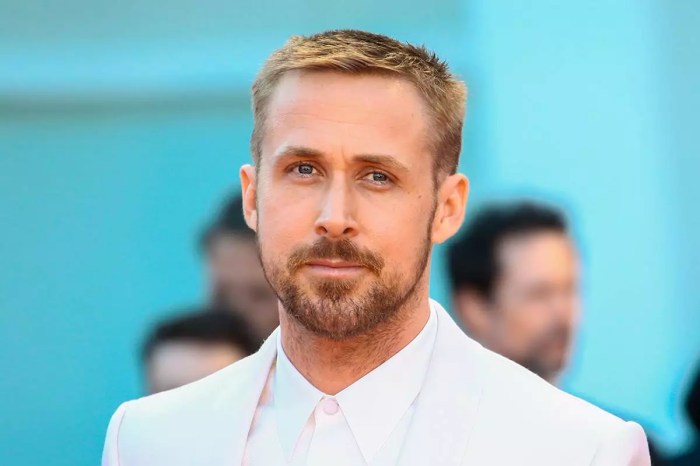
Source: menshaircuts.com
Styling products can provide temporary improvements in the appearance of thinning hair, adding volume and concealing scalp. However, overuse of certain products can weigh down hair or build up on the scalp, potentially leading to irritation or blocking hair follicles.
Key Ingredients in Hair Products for Thinning Hair
Look for products containing ingredients like saw palmetto (to inhibit DHT), biotin (a B vitamin essential for hair health), and caffeine (to stimulate hair follicles).
Applying Hair Thickening Fibers
- Apply fibers to dry hair.
- Lightly shake the container over thinning areas.
- Gently pat the fibers into place.
- Use a hairspray to set the fibers.
Hair Care Routine for Thinning Hair
A consistent hair care routine is crucial for maintaining the health and appearance of thinning hair. Gentle handling and the right products can make a significant difference.
Daily Hair Care Routine
Wash hair with a gentle, sulfate-free shampoo designed for thinning hair. Condition regularly to keep hair hydrated and manageable. Style gently, avoiding harsh pulling or brushing. Avoid heat styling as much as possible.
Diet and Lifestyle for Hair Health
A balanced diet rich in protein, vitamins, and minerals is crucial for hair health. Sufficient protein intake is especially important, as hair is primarily made of protein. A healthy lifestyle, including regular exercise and stress management techniques, can also contribute to better hair health.
Hair Growth Treatments
Hair growth treatments, such as minoxidil and finasteride, can be effective for some men, but they come with potential side effects. Consultation with a dermatologist is essential before starting any hair growth treatment.
Gently Drying and Styling Thinning Hair
Use a low heat setting on your hairdryer and a diffuser attachment to minimize damage. Avoid rubbing the hair vigorously with a towel, instead gently patting it dry. Use styling products sparingly to avoid weighing down the hair.
Consulting a Hair Professional
A skilled stylist can provide personalized advice and techniques for managing thinning hair. Open communication is key to achieving the best results.
Benefits of Consulting a Stylist
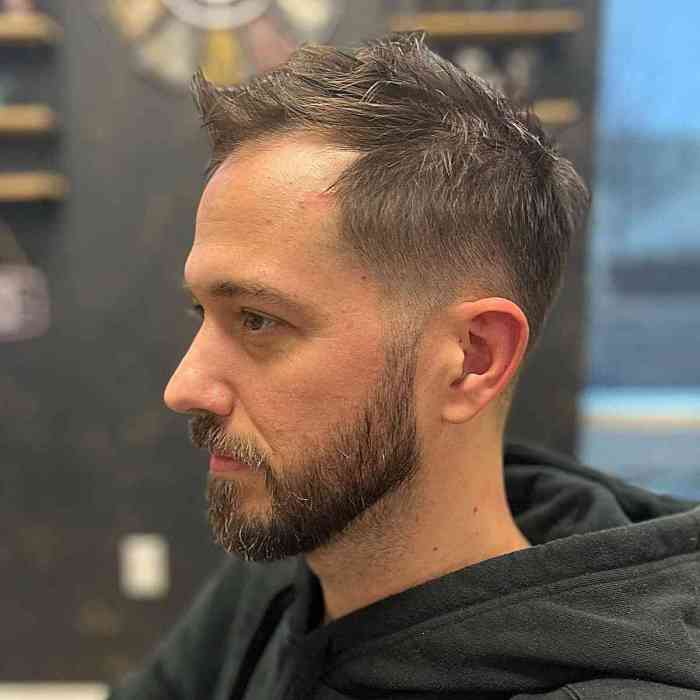
Source: latest-hairstyles.com
Stylists can assess your hair type and thinning pattern to recommend suitable hairstyles and cutting techniques. They can also advise on appropriate hair products and styling methods.
Communicating Hair Concerns
Be open and honest about your concerns regarding your hair thinning. Bring photos of hairstyles you like and discuss your lifestyle and preferences.
Hair Cutting Techniques for Thicker Hair, Hairstyles for thinning hair men
Techniques such as layering, texturizing, and strategic cutting can create the illusion of thicker hair. These techniques add volume and movement, making the hair appear fuller.
Questions to Ask a Hair Stylist
- What hairstyles would best suit my hair type and thinning pattern?
- What hair products would you recommend?
- What cutting techniques can help to create the illusion of thicker hair?
- How can I style my hair at home to minimize the appearance of thinning?
Visual Examples of Hairstyles
Visual examples can be incredibly helpful when choosing a hairstyle for thinning hair. Here are a few detailed descriptions to give you an idea of what works well.
Hairstyle for Receding Hairline and Fine Hair
A short, textured side part is ideal. The sides and back are kept short and tapered, while the top is left slightly longer and styled with a matte pomade or clay to add texture and lift without weighing the hair down. This creates volume and directs attention away from the receding hairline.
Hairstyle for Thinning Hair on Top, Thicker Hair on Sides
An undercut is a good choice. The sides and back are shaved or clipped very short, while the top is left longer and styled with a volumizing product. This creates a contrast that draws attention to the thicker hair on the sides and disguises the thinning on top. A light-hold hairspray can help maintain the style throughout the day.
Short, Textured Hairstyle for Volume
A short, textured crop involves short, choppy layers cut throughout the hair to create texture and volume. The stylist might use thinning shears to remove bulk and create movement. A volumizing mousse or texturizing spray is applied before blow-drying, using a diffuser attachment to lift the hair at the roots. The final result is a naturally tousled, voluminous look that minimizes the appearance of thinning.
Q&A
Can I use minoxidil or finasteride?
Minoxidil and finasteride are common hair loss treatments, but consult a doctor to determine suitability and potential side effects.
How often should I wash my hair?
Washing every other day or every two days is generally recommended to avoid over-drying, especially for thinning hair.
Are there any specific vitamins that help with hair growth?
Biotin, vitamin D, and zinc are often cited for promoting hair health, but consult a doctor before significantly altering your vitamin intake.
What if my thinning is severe?
For severe hair loss, consider hair transplant surgery or other advanced treatments. A consultation with a dermatologist or hair specialist is recommended.


